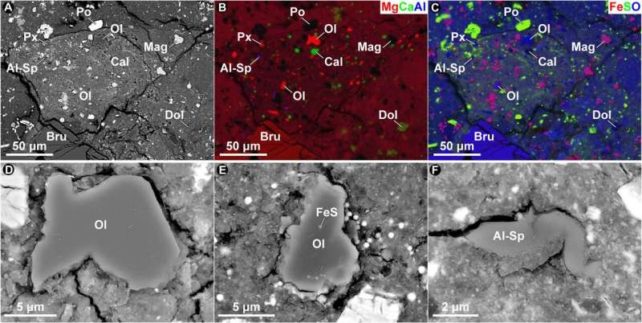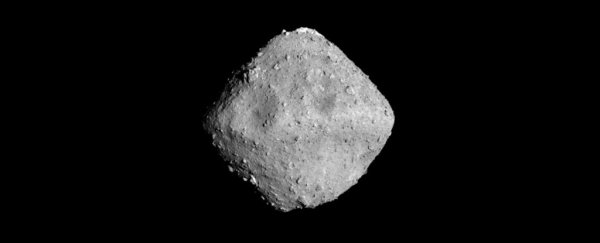Mineral samples collected from the asteroid Ryugu continue to be a treasure trove of interesting information for scientists, with a new analysis revealing the object's birth place.
It turns out Ryugu originated towards the outer reaches of the Solar System, where comets usually form.
A large team of researchers headed by a team from Hokkaido University in Japan looked closely at the minerals that make up Ryugu, using instruments including a scanning electron microscope and a secondary ion mass spectrometer.
In particular, they examined the levels of isotopes of oxygen 16.

"Oxygen isotopic compositions of primary minerals can potentially provide important constraints on their origin," Hokkaido University planetary scientist Noriyuki Kawasaki and colleagues write in their published paper.
Comets form further away from the Sun than asteroids, and because of the colder temperatures in those distant regions, they retain a significant amount of ice as part of their composition. Asteroids, in comparison, are made almost entirely of rock.
The presence of carbonate minerals in the Ryugu dust samples, together with amino acids, suggests that the asteroid formed in low temperature, watery conditions – so somewhere out where ice doesn't easily vaporize, perhaps in the regions around Uranus and Neptune.
That's not all though: the team was also able to identify minerals like spinel, olivine, and perovskite that form at higher temperatures (above 1,000 degrees Celsius or 1,832 degrees Fahrenheit).
The hypothesis is that some material from the inner Solar System traveled outwards away from the Sun, eventually colliding with Ryugu and becoming part of it.
The copper and zinc isotopes of Ryugu closely match those of the carbonaceous meteorite Ivuna that was discovered many years ago in Tanzania, the researchers report. There are also similarities with the composition of the 81p/Wild 2 comet, meaning it likely formed the same way, in an smoosh of material from the inner and outer Solar System.
All of this detective work helps scientists to chart the geological history of Ryugu and its place in the Universe. The asteroid is likely to be billions of years old, and brings with it clues about the earliest years of the Solar System.
Up until this point, meteorites like Ivuna, known as carbonaceous chondrites, have been used by scientists to make educated guesses about the asteroids and comets that fell to Earth across its history. Now though, we've got samples plucked from the vacuum of space to study.
Scientists have already established that Ryugu contains particles from other stars that exploded before the Sun formed. The asteroid is likely to tell us much more in the future too, as studies continue into the material collected from it.
"We infer that the accretion region of Ryugu [and Ivuna-type] parent bodies is distinct from those for other carbonaceous chondrite groups including Tagish Lake and could be closer to the accretion region of 81P/Wild2 comet," conclude the researchers.
The research has been published in Science Advances.
